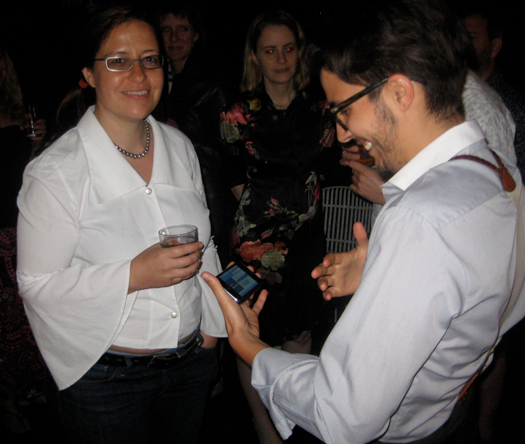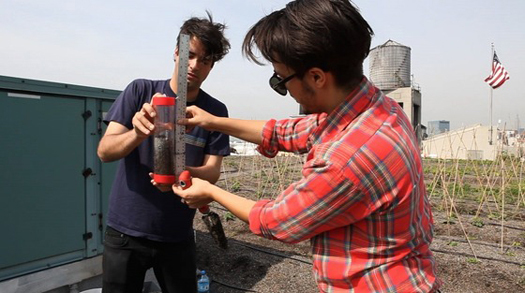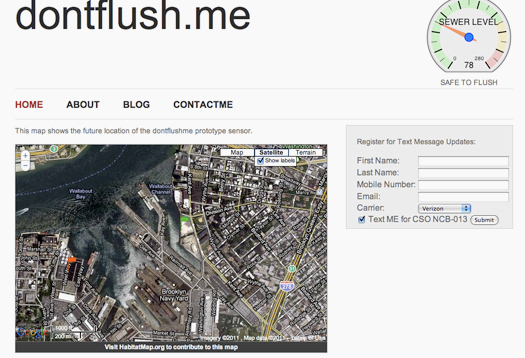
This was a first for me: witnessing first-hand a Kickstarter project cross the line and go live.
The happy guy with the phone (in Claire Hartten's garden in Brooklyn) is Tyler Caruso, joint founder (with Erik Facteau) of Seeing Green: The Value of Urban Agriculture.
Their project is a year-long research effort to measure the stormwater management potential of two urban farms: Brooklyn Grange (a rooftop farm) & Added Value (raised beds) in NYC. Their aim is to create a model for future research, that can be replicated anywhere, to help validate and support urban farms.
“We think policies should be based on scientific study” Tyler explains; “we want our work to encourage the adoption of supportive incentives and non-restrictive regulations for urban farming.”
This is important work. Farms give us a lot more than just edible produce. They also increase food security, decrease food miles traveled, offer healthy and nutritious produce, create green jobs, improve air and water quality, combat Urban Heat Island effect, beautify neighborhoods and — a Tyler favourite — “create habitat for critters.”
And it's not just about food. Wastewater treatment plants in New York account for 17 per cent of the city's green house gas emissions. Tyler believes that water intensive plants with deeper growing beds can increase an urban farm's water-holding capacity. But he needs numbers to back up that hunch.
“We know farms are good but we don’t know exactly how good” Tyler explains. “There are a lot of skeptics out there that need some convincing. And there is nothing better for combating a nay-sayer than hard data. All decisions in cities are based on numbers.”

A first chunk of the Kickstarter money will be used to purchase dataloggers, flowmeters, a wind sentry, moisture probes, rain gauges, sensor shields, batteries, lumber and greenroof materials.
Right now, Seeing Green will focus in depth on on just two sites. But there's real potential to reproduce the monitoring experiment on a wider scale and across the city if other groups can find the resources to take part. Using the Pachube platform, for example, one could begin to see feedback on the water retaining properties of different kinds of beds and plants — and in real-time.
One project already using Pachube, but not yet funded, is Don't Flush Me. The idea here is to allow NYC residents to help reduce the amount of pollution in the harbor. Some 27 billion gallons of raw sewage is dumped into the harbor every year. This comes from Combined Sewer Overflows (CSOs) that open when the sewer system is overloaded.
The Don't Flush Me service would alert residents when the overflows happen and encourage them to reduce their wastewater production before and during an overflow event.
